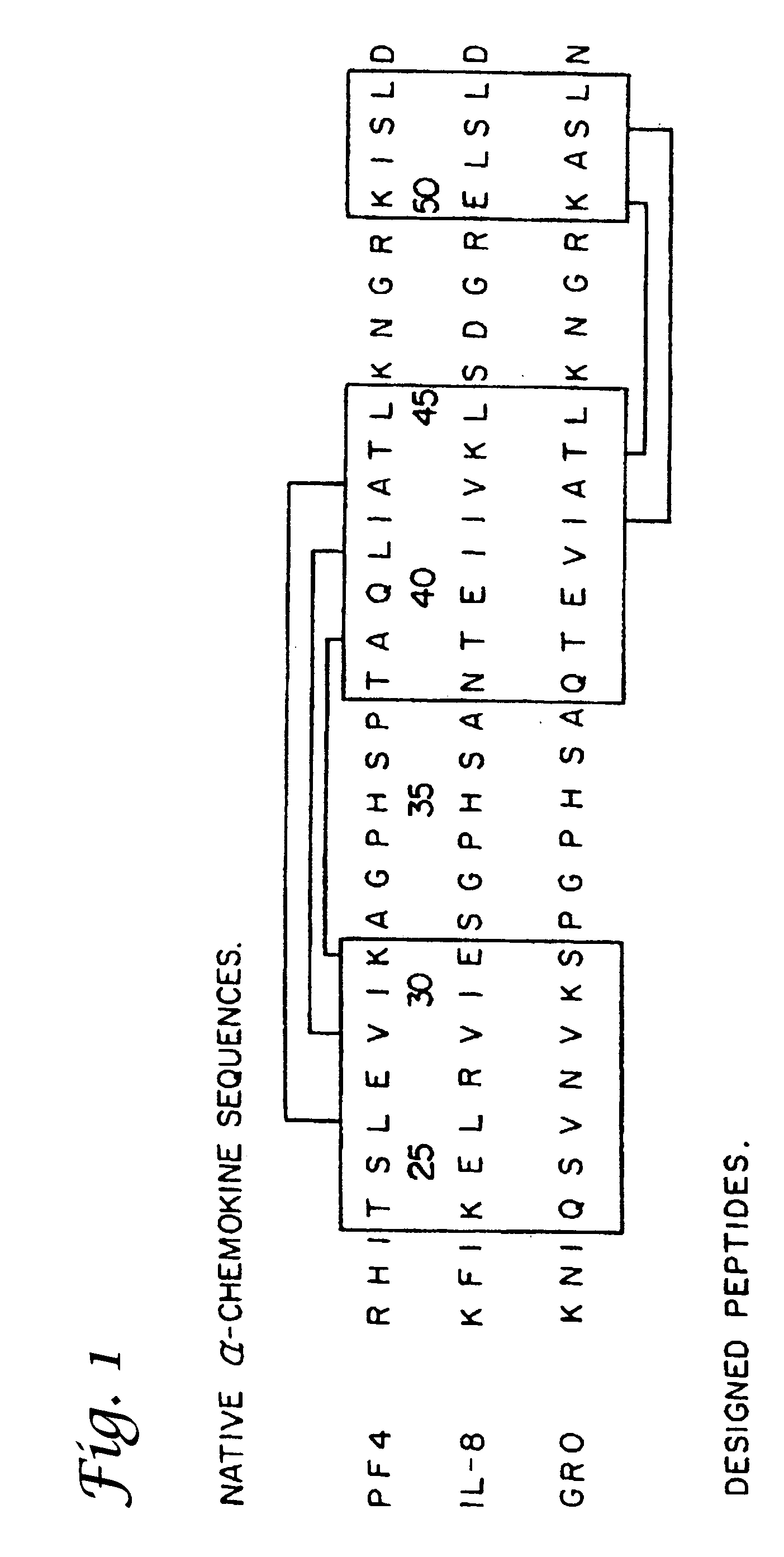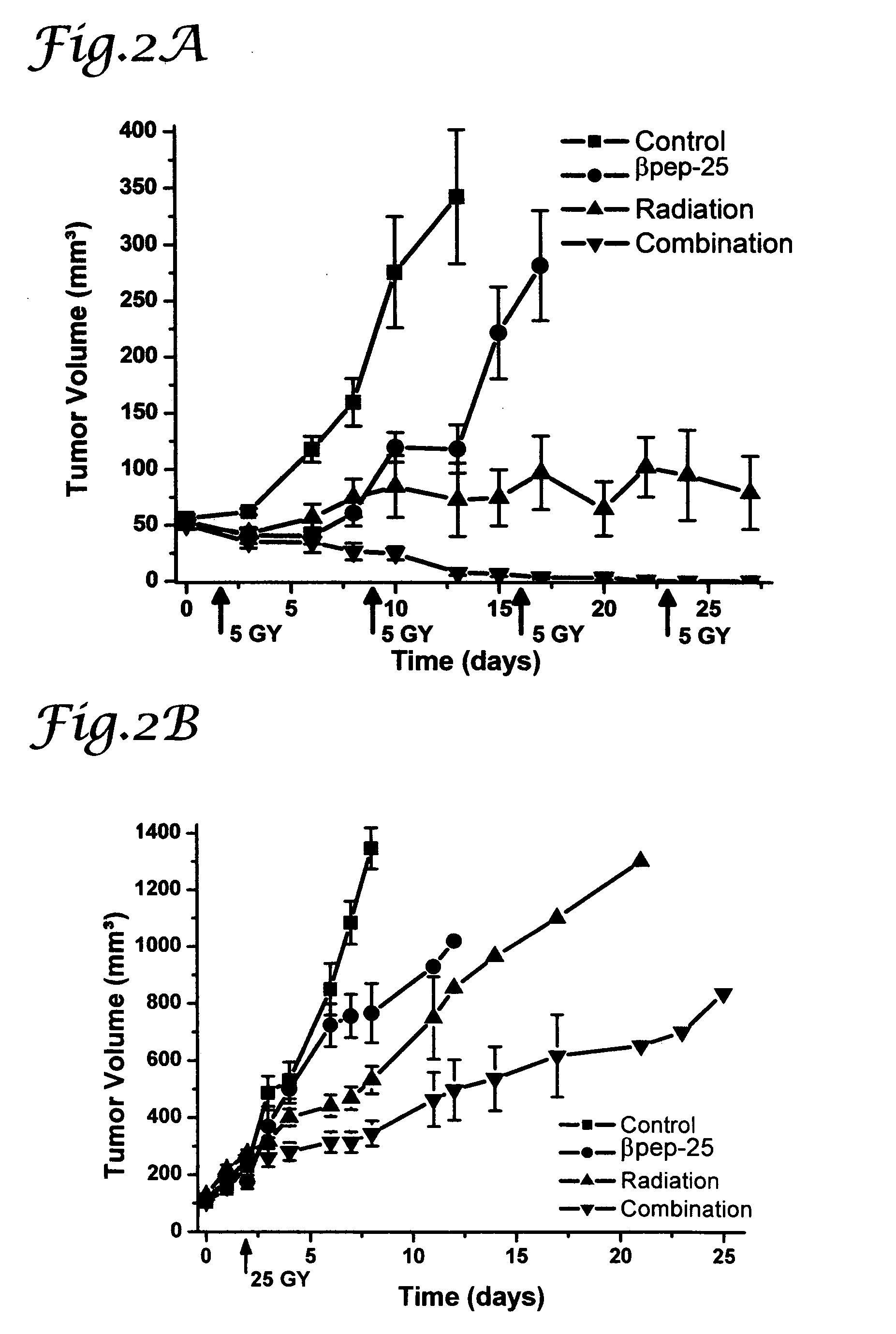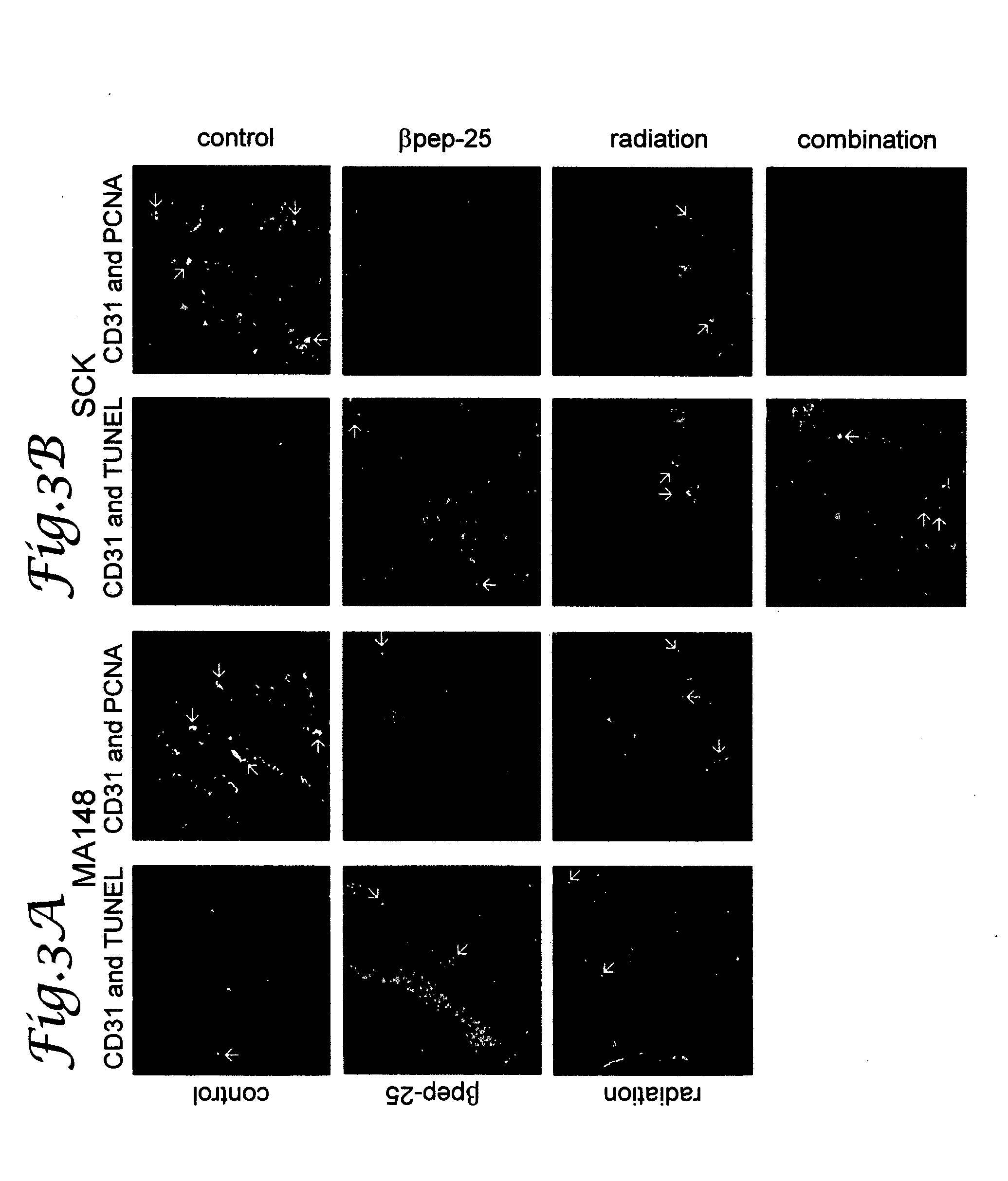Tumor treatment using beta-sheet peptides and radiotherapy
a beta-sheet peptide and tumor treatment technology, applied in the direction of peptide/protein ingredients, angiogenin, therapy, etc., can solve the problems of difficult and expensive production of agents, not easily mutated into drug resistant variants, and documented toxicity issues, etc., to prolong the radiation-induced tumor growth delay and effective tumor treatment strategy
- Summary
- Abstract
- Description
- Claims
- Application Information
AI Technical Summary
Benefits of technology
Problems solved by technology
Method used
Image
Examples
example 1
Gamma and X-ray Irradiation
[0089] For X-ray irradiation, mice were first anesthetized and covered with a 4 millimeter (mm) thick lead shield. The tumor-bearing legs were gently extended into the radiation field and exposed to X-rays at a dose rate of 1.4 Gy / minute. A Philips 250 kV orthovoltage machine (Philips Medical Systems, Brookfield, Wis.) was used for the irradiation (Griffin et al., Cancer Res 62, 1702-06 (2002)). In the in vitro experiments cells were irradiated with γ-rays using a 137Cs irradiator (Mark I Cesium irradiator; J. L. Shepherd and Associates, Glendale, Calif.) at a dose rate of 0.9 Gy / minute.
example 2
Carcinoma Mouse Models and Radiosensitization Test
[0090] To prepare the MA148 ovarian carcinoma mouse model, female athymic nude mice (nu / nu, 5-6 weeks old) were purchased from the National Cancer Institute and allowed to acclimate for one week. Exponentially growing human ovarian MA148 epithelial carcinoma cells were cultured, harvested, suspended in serum free RPMI (2.0×107 cells / milliliter (ml)) and inoculated subcutaneously (s.c.) into the right flank of the mouse (Dings et al., Cancer Res 63, 382-85 (2003)). Treatment was initiated after randomization of mice, when established tumors reached a size of at least 50 mm3. Four groups were assigned, control (n=13), βpep-25 (n=10), radiation (n=10), and the combination of βpep-25 and radiation (n=10). βpep-25, dissolved in PBS was administered using osmotic mini-pumps (10 milligrams (mg) / kilograms (kg) / day; Durect; Cupertino, Calif.) implanted s.c. into the left flank. The pumps had a treatment span of 28 days. The mice of the contr...
example 3
Statistical Analysis and Synergy Determination
[0094] Data sets were analyzed using a commercially available software package (InStat 2.03, Graphpad Software, Inc.). A two-tailed Student's t test was used to determine the validity of the differences between control and treatment data sets. A P value of 0.05 or less was considered significant.
[0095] In order to determine the degree to which the combination of βpep-25 and radiation had synergistic effects on tumor growth delay the following formula was applied: observed growth delay from combination treatment / {(tumor growth delay from treatment 1)+(tumor growth delay from treatment 2)}. A ratio of greater than 1 indicates a synergistic (greater than additive) effect. Growth delay was calculated by subtracting the average time for control tumors to grow three-fold in volume from the time required for treated tumors to increase in volume by 3-fold from the day of radiation.
PUM
| Property | Measurement | Unit |
|---|---|---|
| temperature | aaaaa | aaaaa |
| time | aaaaa | aaaaa |
| volume | aaaaa | aaaaa |
Abstract
Description
Claims
Application Information
 Login to View More
Login to View More - R&D
- Intellectual Property
- Life Sciences
- Materials
- Tech Scout
- Unparalleled Data Quality
- Higher Quality Content
- 60% Fewer Hallucinations
Browse by: Latest US Patents, China's latest patents, Technical Efficacy Thesaurus, Application Domain, Technology Topic, Popular Technical Reports.
© 2025 PatSnap. All rights reserved.Legal|Privacy policy|Modern Slavery Act Transparency Statement|Sitemap|About US| Contact US: help@patsnap.com



